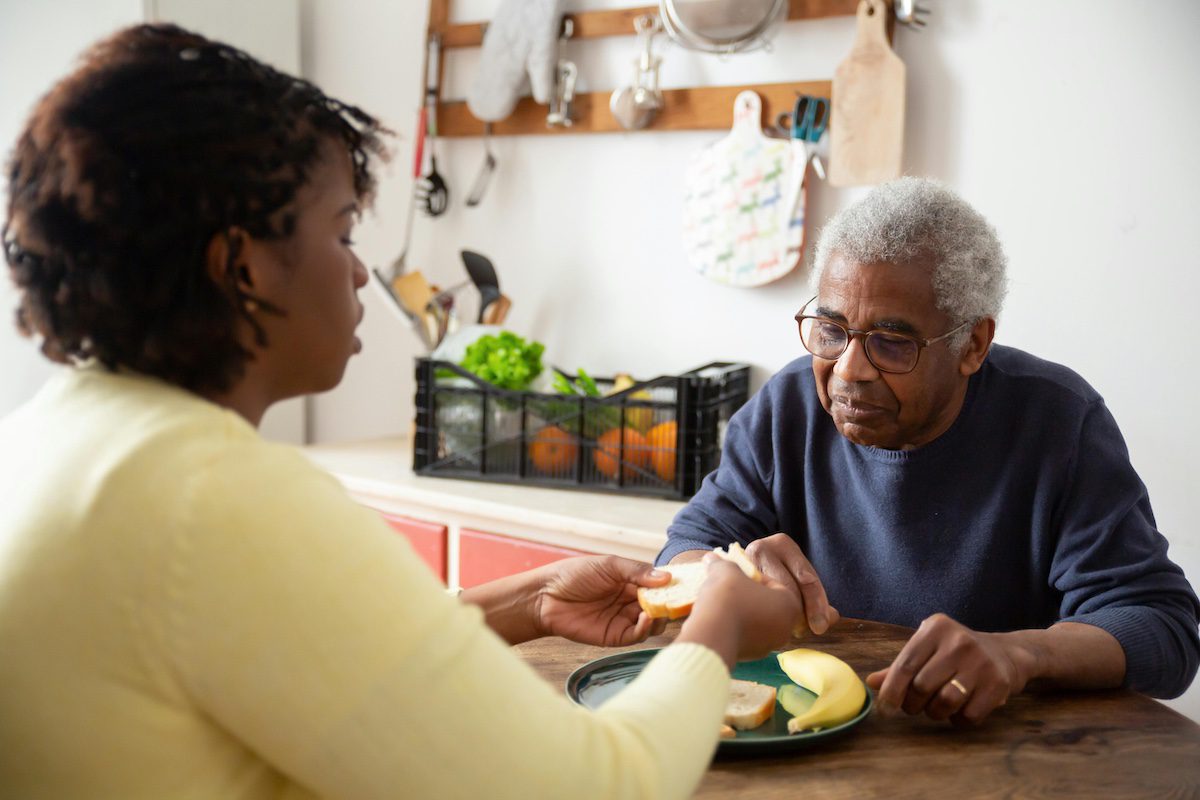Talking about death, loss, and hospice care with children is one of the most difficult conversations families face. As adults, we often want to shield children from pain, but avoiding the subject can leave them feeling confused, anxious, or left out during important family moments.
Children are perceptive—they notice when something is wrong, even if no one tells them directly. By offering age-appropriate explanations, creating space for their emotions, and including them in the journey, families can help children understand loss and hospice care in a way that is compassionate and supportive.
Why It’s Important to Talk About Hospice Care with Children
Children, like adults, experience grief, though they often express it differently. Silence or secrecy around a loved one’s illness may lead to misunderstandings, fears, or even misplaced guilt.
For example, a child might think they caused a grandparent’s illness because of something they said or did. Open communication helps prevent these misconceptions.
When families include children in conversations about hospice care, it:
- Builds trust and emotional resilience.
- Helps them feel secure and less isolated.
- Encourages them to ask questions and share their feelings.
- Teaches healthy coping strategies they can use throughout life.
By being honest while offering reassurance, families can give children the tools to process their emotions in healthy ways.
Explaining Hospice Care in Simple Terms
The concept of hospice care can be confusing for children. How you explain it should depend on the child’s age and level of understanding, but the goal is to use clear, simple language that avoids euphemisms that may confuse them.
For example:
- Young children (ages 3–6): “Hospice care helps keep Grandma comfortable because the doctors know she won’t get better. The nurses and helpers make sure she doesn’t feel pain and that we can spend time with her.”
- School-age children (ages 7–12): “Hospice care is when doctors and nurses focus on making someone comfortable instead of trying to cure their illness. It means we’ll have more time to be together, and they won’t have to suffer.”
- Teenagers: “Hospice care provides support for people at the end of their lives. It’s about dignity, comfort, and giving families time together instead of focusing on aggressive treatments.”
Being clear about what hospice is—and what it isn’t—helps children understand that the focus is on comfort and love, not abandonment.
Helping Children Understand Loss
Loss is a difficult concept for children, especially younger ones who may not fully grasp the permanence of death. They may believe that a loved one will “come back” or that death is temporary, which is normal for their stage of development. Adults can help by being patient, repeating explanations as needed, and reassuring children that their feelings are valid.
It’s also important to be honest about the reality of death. Avoid phrases like “passed away” or “went to sleep,” as these can be confusing or even frightening. Instead, gently explain that the person’s body has stopped working and they won’t be coming back, but the family can always keep memories and love in their hearts.
Encouraging Open Conversations
Children may not always know how to express their emotions or even what questions to ask. By creating space for open conversations, caregivers can help children feel safe and supported.
Some tips include:
- Ask open-ended questions, such as “How are you feeling about Grandma being sick?”
- Let them know it’s okay to feel sad, angry, confused, or even relieved.
- Be patient if they repeat questions or ask for reassurance multiple times.
Share your own feelings honestly, modeling that it’s normal to express emotions. The goal is not to have all the answers but to be present and willing to listen.
Including Children in the Hospice Journey
Children often benefit from being involved in the hospice experience in age-appropriate ways. Excluding them can make them feel left out or increase their anxiety. Involvement can give them a sense of purpose and connection, even in difficult times.
Ways to include children:
- Visits: Encourage them to spend time with their loved one, even if it’s brief.
- Creative expression: Drawing pictures, writing letters, or making crafts as gifts.
- Rituals: Helping with prayers, songs, or special family traditions.
- Storytelling: Sharing favorite memories and listening to stories from the loved one.
These small acts allow children to feel included while creating lasting memories.
Supporting Children Through Grief
Grief doesn’t end when a loved one passes away—it continues as children adjust to life without them. Supporting children during this period means continuing open conversations, validating their feelings, and offering outlets for expression.
Strategies for supporting grieving children include:
- Encouraging journaling, drawing, or other creative outlets.
- Reading age-appropriate books about loss.
- Maintaining familiar routines to provide stability.
- Offering extra patience, hugs, and reassurance.
- Seeking professional support, such as grief counseling or support groups, if needed.
Remember that grief is not linear, and children may show emotions in bursts, alternating between sadness and playfulness. This is normal and part of how they process loss.
Signs a Child May Need Extra Support
While most children adapt to loss with time and support, some may struggle more deeply and need additional help.
Watch for signs such as:
- Persistent sadness or withdrawal from friends and activities.
- Difficulty sleeping or frequent nightmares.
- Declining performance in school.
- Frequent physical complaints like stomachaches or headaches without medical cause.
- Excessive worry, anger, or changes in behavior.
If these signs persist, it may be helpful to consult with a child therapist, grief counselor, or pediatrician.
Teaching Hope and Resilience
While loss is painful, it can also be an opportunity to teach children about resilience, love, and the value of relationships. Families can emphasize the importance of remembering the good times, honoring the loved one’s memory, and finding comfort in the ongoing support of family and community.
Practical ways to foster resilience include:
- Creating memory boxes or scrapbooks with photos and mementos.
- Celebrating anniversaries or birthdays with special traditions in the loved one’s honor.
- Talking about the positive impact the loved one had on their lives.
- Reminding children that feeling joy again doesn’t mean forgetting the person they lost.
By combining honesty with hope, families can help children grow through the experience rather than feel overwhelmed by it.
Final Thoughts
Helping children understand loss and hospice care is a delicate but important responsibility. By offering clear explanations, encouraging open communication, and including children in the process, families can guide them through one of life’s most difficult experiences with love and compassion.
Children may not remember every word spoken during this time, but they will remember the comfort, honesty, and presence of the adults who supported them. In the end, the goal is not to shield children from pain but to help them face it with the reassurance that they are not alone.


